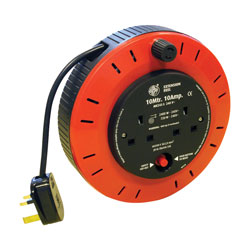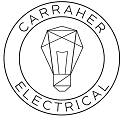Extension Cord Safety Fact Sheet – ESFi :: Electrical Safety Foundation International
Found this on the internet and decided to pass it on as it contains good information. One main problem that I have often come across is extension leads overheating because they are not fully uncoiled.
An extension cord is an insulated, flexible electric wire fitted with a plug at one end and one or more outlets on the other. It provides a convenient, way to use electrical equipment that can’t reach a wall outlet.
Safety Tips
These important safety principles can help keep your office safe from electrical hazards:
Extension cords should only be used on a temporary basis; unplug and safely store them after every use.
Never use a cord that feels hot or is damaged in any way. Touching even a single exposed strand can give you an electric shock or burn.
Make sure extension cords are properly rated for their intended use, indoor or outdoor, and meet or exceed the power needs of the appliance or tool being used.
Do not run extension cords through walls or ceilings. This may cause the cord to overheat, creating a serious fire hazard.
Keep extension cords out of high traffic areas like doorways or walkways where they pose a tripping hazard.
Insert plugs fully so that no part of the prongs is exposed when the extension cord is in use.
Do not nail or staple electrical cords to walls or baseboards.
If an extension cord is needed for a longer period of time, temporary power taps can be used when insufficient electrical receptacles are available. These devices may have 3 to 6 electrical receptacles, a circuit breaker, a 6-ft. to 15-ft. cord and a surge protector, and should bear the mark of a certified testing organization.
Ensure that all extension cords are certified by a nationally recognized testing laboratory such as UL, CSA, or ETL, and
via Extension Cord Safety Fact Sheet – ESFi :: Electrical Safety Foundation International.

